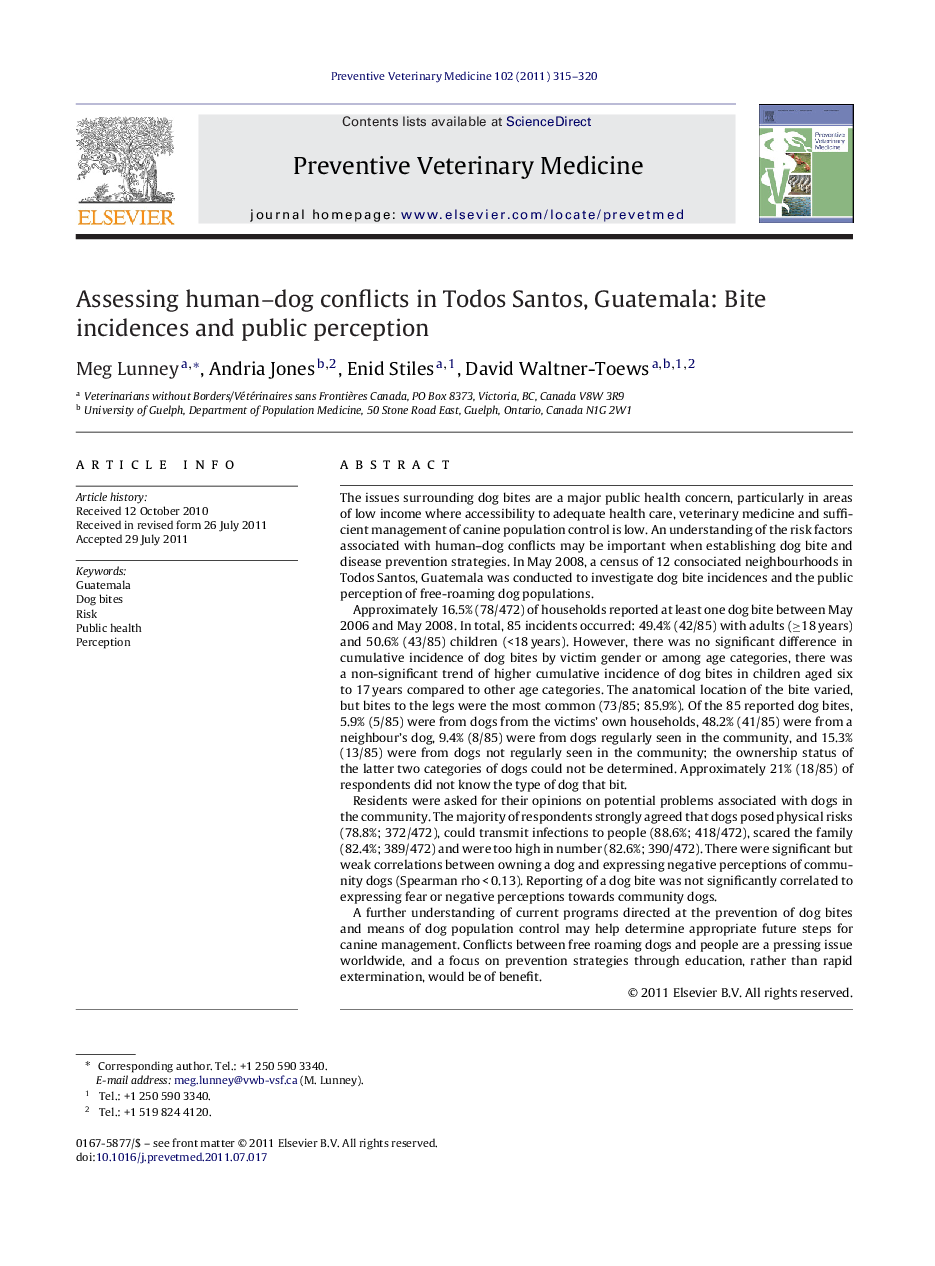| Article ID | Journal | Published Year | Pages | File Type |
|---|---|---|---|---|
| 2452746 | Preventive Veterinary Medicine | 2011 | 6 Pages |
The issues surrounding dog bites are a major public health concern, particularly in areas of low income where accessibility to adequate health care, veterinary medicine and sufficient management of canine population control is low. An understanding of the risk factors associated with human–dog conflicts may be important when establishing dog bite and disease prevention strategies. In May 2008, a census of 12 consociated neighbourhoods in Todos Santos, Guatemala was conducted to investigate dog bite incidences and the public perception of free-roaming dog populations.Approximately 16.5% (78/472) of households reported at least one dog bite between May 2006 and May 2008. In total, 85 incidents occurred: 49.4% (42/85) with adults (≥18 years) and 50.6% (43/85) children (<18 years). However, there was no significant difference in cumulative incidence of dog bites by victim gender or among age categories, there was a non-significant trend of higher cumulative incidence of dog bites in children aged six to 17 years compared to other age categories. The anatomical location of the bite varied, but bites to the legs were the most common (73/85; 85.9%). Of the 85 reported dog bites, 5.9% (5/85) were from dogs from the victims’ own households, 48.2% (41/85) were from a neighbour's dog, 9.4% (8/85) were from dogs regularly seen in the community, and 15.3% (13/85) were from dogs not regularly seen in the community; the ownership status of the latter two categories of dogs could not be determined. Approximately 21% (18/85) of respondents did not know the type of dog that bit.Residents were asked for their opinions on potential problems associated with dogs in the community. The majority of respondents strongly agreed that dogs posed physical risks (78.8%; 372/472), could transmit infections to people (88.6%; 418/472), scared the family (82.4%; 389/472) and were too high in number (82.6%; 390/472). There were significant but weak correlations between owning a dog and expressing negative perceptions of community dogs (Spearman rho < 0.13). Reporting of a dog bite was not significantly correlated to expressing fear or negative perceptions towards community dogs.A further understanding of current programs directed at the prevention of dog bites and means of dog population control may help determine appropriate future steps for canine management. Conflicts between free roaming dogs and people are a pressing issue worldwide, and a focus on prevention strategies through education, rather than rapid extermination, would be of benefit.
